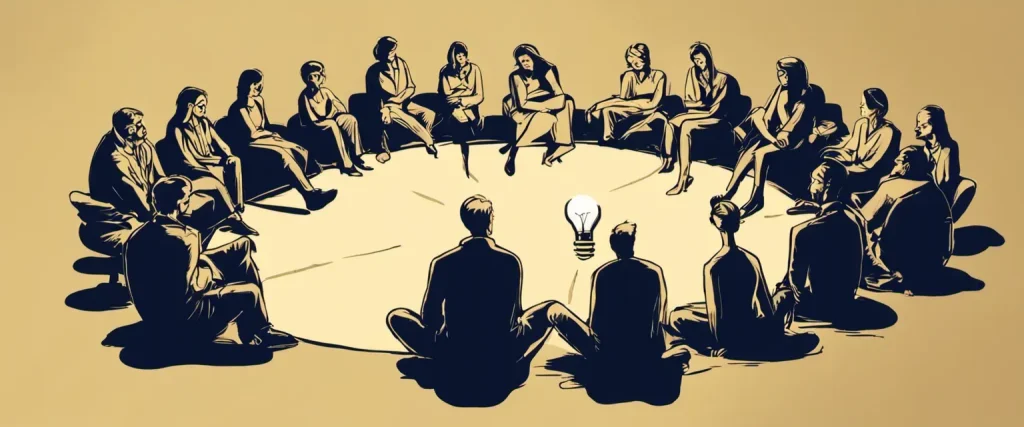In “Social Intelligence,” Daniel Goleman explores the intricate world of human communication, emphasizing the power of empathy and understanding in shaping our interactions and relationships. Drawing from a meld of scientific research and real-life stories, Goleman uncovers the remarkable potential of social intelligence in transforming personal lives, workplaces, and communities alike. Renowned for his expertise in emotional intelligence, Goleman is a psychologist, journalist, and bestselling author recognized for popularizing the concept of emotional intelligence in his previous book, “Emotional Intelligence: Why It Can Matter More Than IQ.” His groundbreaking works have revolutionized our understanding of human behavior and have made a profound impact on fields ranging from education to leadership development. By delving into the realm of social intelligence, Goleman provides readers with invaluable insights and practical tools to navigate the complexities of our interconnected world.
Chapter 1: Introduction to Social Intelligence
Chapter 1 of “Social Intelligence” by Daniel Goleman provides an introduction to the concept of social intelligence and its significance in our lives. Goleman begins by highlighting the growing recognition that cognitive intelligence (IQ) alone does not adequately predict the success or happiness of individuals. The author explores the crucial role social intelligence plays in navigating interpersonal relationships, stating that it is the key to excelling in the complexities of the social world.
Goleman defines social intelligence as the ability to effectively navigate social interactions, understand others’ emotions and perspectives, and make a positive impact on those around us. He emphasizes that social intelligence extends beyond mere empathy or understanding emotions; it involves integrating this emotional awareness into one’s actions to navigate social situations effectively.
The chapter explores neurobiological research that demonstrates the nature of our social brains, including mirror neurons that mimic others’ actions and emotions. This finding sheds light on how empathy can develop and how social connections influence our emotional well-being.
Additionally, Goleman discusses the importance of early experiences in shaping social intelligence. He highlights the influential role of parents and caregivers in fostering emotional awareness in children, as well as the impact of stress and trauma on social development.
The chapter concludes by explaining how social intelligence impacts various aspects of our lives, including personal relationships, professional success, and physical health. Goleman argues that by understanding and developing our social intelligence, we can enhance our emotional well-being, forge healthier relationships, and contribute to a more empathetic and compassionate society.
Chapter 2: The Power of Empathy
Chapter 2 of the book “Social Intelligence” by Daniel Goleman focuses on the power of empathy. It delves into the importance of this social skill and how it impacts our relationships, communication, and overall well-being.
Goleman defines empathy as the ability to understand and share the feelings of others. He explains that it comprises two crucial components: cognitive empathy and emotional empathy. Cognitive empathy refers to the ability to understand someone else’s perspective and see the world through their eyes. Emotional empathy, on the other hand, involves feeling what the other person is feeling emotionally.
The author highlights the significance of empathy in various domains of life, such as personal relationships, workplace environments, parenting, therapy, and even politics. Goleman argues that empathy is essential for building strong connections with others, resolving conflicts, and fostering a sense of trust and cooperation.
Goleman explores the biological basis of empathy, highlighting the role of mirror neurons in our brains. These neurons allow us to automatically mimic and resonate with the emotions we perceive in others, laying the foundation for empathy.
The chapter also delves into the impact of empathy on health and well-being. Goleman discusses studies that have shown how empathic doctors can enhance healing processes, while a lack of empathy can lead to negative health outcomes. He also emphasizes the importance of self-empathy, as being in touch with our own emotions allows us to better understand and empathize with others.
In conclusion, Chapter 2 of “Social Intelligence” highlights the power of empathy in transforming our relationships, enhancing communication, and promoting overall well-being. It underscores the significance of empathy for personal and societal development, emphasizing that empathy is a skill that can be cultivated for the benefit of both individuals and societies as a whole.
Chapter 3: Understanding Emotions
Chapter 3 of “Social Intelligence” by Daniel Goleman focuses on understanding emotions and their role in social interactions. Goleman emphasizes that emotions are not isolated occurrences but intricately connected to various aspects of our lives.
The chapter begins by discussing how emotional responses are largely automatic and occur without our conscious control. These responses are often triggered by external stimuli or internal thoughts and can influence our behavior and decision-making. Goleman emphasizes that emotional intelligence involves recognizing and understanding our own emotions as well as those of others.
To better understand emotions, Goleman introduces the concept of “emotional hijacking,” which refers to moments when intense emotions overpower rational thinking. When emotionally hijacked, people often exhibit impulsive behavior and struggle to regulate their emotions effectively. Goleman highlights the importance of emotional self-awareness, which involves recognizing one’s emotions as they arise and being able to distinguish between different emotional states.
Furthermore, Goleman explores the impact of emotions on relationships. He explains that emotions are contagious and can be transmitted through facial expressions, body language, and even through subtle cues like voice tone. Understanding and empathizing with others’ emotions are crucial in establishing strong social connections and fostering healthy relationships.
Goleman also delves into the significance of emotional understanding in various contexts, such as the workplace and education. He emphasizes that emotional intelligence is an essential skill for effective leadership, teamwork, and communication. Educators can benefit from understanding their students’ emotions, as emotions significantly influence the learning process and academic performance.
Overall, Chapter 3 of “Social Intelligence” provides a comprehensive overview of the role and importance of emotions in our lives. It emphasizes the need for emotional self-awareness and understanding others’ emotions to foster healthy relationships and navigate social situations effectively.
Chapter 4: The Neuroscience of Social Intelligence

In Chapter 4 of “Social Intelligence” by Daniel Goleman, titled “The Neuroscience of Social Intelligence,” the author explores the biological foundations of our social interactions and emotional intelligence. Goleman elucidates how our brains are wired to be socially connected and highlights the crucial role of mirror neurons in shaping our social behavior.
Mirror neurons, as the name suggests, mirror the actions and emotions of others in our own brain. These neurons fire not only when we perform an action but also when we observe someone else performing the same action. Through mirror neurons, we can instinctively understand and empathize with others’ experiences. Goleman explains that the activation of these neurons helps us form rapport, imitate others’ actions, and learn from their behaviors.
Furthermore, the author emphasizes the importance of emotional empathy, which allows us to sense and comprehend the emotions of others by integrating the information from mirror neurons. This quality enables us to respond compassionately and appropriately. Goleman reveals that empathy and compassion can be cultivated through practicing mindfulness and engaging in experiences that strengthen our neural circuits related to empathy.
Additionally, Goleman explores the concept of emotional contagion, whereby emotions spread from one person to another, ultimately affecting behavior. The author cites several studies that demonstrate how easily emotions transfer between individuals in a social group, leading to collective vibes and influencing interactions.
Overall, Chapter 4 of “Social Intelligence” delves into the neuroscience behind our social connections and emotional intelligence. It highlights the role of mirror neurons in our ability to understand and empathize with others, while also emphasizing the significance of emotional empathy and emotional contagion in shaping our social behavior.
Chapter 5: Emotional Contagion and Mirror Neurons
Chapter 5 of the book “Social Intelligence” by Daniel Goleman explores the concepts of emotional contagion and mirror neurons, two interconnected topics that delve into the nature of human empathy and social interaction.
Emotional contagion refers to the phenomenon where individuals automatically and unconsciously mimic the emotions of those around them. It is an innate ability deeply ingrained in our social interactions and has a profound impact on our relationships. Goleman draws on studies that emphasize the contagious nature of emotions, demonstrating how people readily pick up on emotional cues from facial expressions, body language, and vocal tones. He explains how this contagious process occurs through a neural mechanism in our brains, which enables us to empathize with others, feel their emotions, and communicate without explicit verbal cues.
Goleman then introduces the concept of mirror neurons, highlighting their role in emotional contagion. These neurons fire in our brain when we observe someone performing an action or experiencing an emotion, effectively mirroring that action or emotion in our own brain. This mirroring mechanism helps us understand and resonate with the experiences of others. Mirror neurons are also thought to underlie abilities such as imitation, learning, and empathy, as they allow us to simulate the mental states of others.
Throughout the chapter, Goleman explores various implications of emotional contagion and mirror neurons, including their impact on social bonding, emotional well-being, and even on the spreading of negative or positive moods within groups. He also discusses how emotional contagion can be harnessed for positive purposes, such as promoting empathy, compassion, and collaboration.
In summary, Chapter 5 of “Social Intelligence” delves into the fascinating concepts of emotional contagion and mirror neurons, highlighting their influence on our social interactions, empathy, and ability to understand the experiences of others. Goleman provides scientific evidence and real-life examples to emphasize the importance of these mechanisms in shaping human behavior and improving social relationships.
Chapter 6: Empathy in Relationships
Chapter 6 of “Social Intelligence” by Daniel Goleman explores the crucial role of empathy in our relationships. Goleman highlights how empathy is the foundation of successful interactions and the key to building strong connections with others.
The chapter begins by emphasizing the importance of empathy for understanding the emotional state of others accurately. Through empathetic listening, individuals can gain a deeper understanding of their loved ones’ emotions. By focusing on the subtle cues in the tone of voice, facial expressions, and body language, a person can better comprehend what someone else is feeling, fostering a stronger emotional connection.
Goleman then delves into the concept of cognitive empathy, which involves understanding another person’s perspective or point of view. This kind of empathy allows individuals to better appreciate the thoughts and opinions of others, even if they differ from their own. By developing cognitive empathy, people can gain insight into the unique experiences and beliefs of those around them, leading to more open-minded and compassionate relationships.
The chapter also discusses the importance of affective empathy, the ability to emotionally resonate with others. When individuals genuinely empathize with another person, they can feel the same emotions as the person they are engaging with. This emotional connection leads to a deep understanding and bonding experience, promoting trust and support in relationships.
Goleman concludes the chapter by highlighting the significance of empathy in various aspects of life, from personal relationships to professional settings. Developing empathy skills can enhance communication, resolve conflicts more effectively, and positively impact team collaboration. Ultimately, empathy serves as a powerful tool for building healthy and meaningful connections with others, nurturing a more compassionate and understanding society.
Chapter 7: Social Awareness and Mindfulness
Chapter 7 of “Social Intelligence” by Daniel Goleman focuses on the importance of social awareness and mindfulness in our interpersonal interactions. Goleman highlights that social awareness involves being attuned and sensitive to the thoughts, feelings, and needs of others, as well as the dynamics of social situations.
The chapter begins by exploring the neural basis of social awareness, emphasizing the existence of mirror neurons that enable us to empathize and understand others by mirroring their experiences. Goleman asserts that cultivating social awareness requires paying attention to nonverbal cues, such as facial expressions and body language, which can provide valuable insights into others’ emotional states.
The author then delves into the concept of empathy, emphasizing that it is a vital component of social awareness. Empathy involves understanding and sharing the emotions of others, providing us with a deeper understanding of their experiences. Goleman argues that empathic listening, where individuals wholly focus on understanding the speaker’s perspective without judgment or interruption, enhances social connections and helps resolve conflicts more effectively.
Furthermore, Goleman introduces mindfulness, which involves being fully present and engaged in the current moment. Mindfulness allows individuals to better regulate their own emotions, making them better equipped to navigate social situations. Goleman explains that practicing mindfulness can increase self-awareness, leading to a deeper understanding of one’s own emotions and reactions. This self-awareness extends to awareness of one’s own biases and prejudices, enabling individuals to make more objective judgments.
The chapter concludes by outlining the potential benefits of social awareness and mindfulness, including improved relationships, better emotional regulation, and increased empathy. Goleman emphasizes that these skills can be developed through training and practice, ultimately leading to enhanced social intelligence and more harmonious connections with others.

Chapter 8: Cultivating Social Intelligence
Chapter 8 of “Social Intelligence” by Daniel Goleman is titled “Cultivating Social Intelligence” and focuses on various practices and strategies to enhance our social intelligence skills.
Goleman begins by emphasizing that social intelligence can be developed and improved throughout our lives. He highlights the importance of empathy as a key element of social intelligence, explaining that understanding the emotions and needs of others can lead to more successful interactions and relationships. Goleman provides examples of how empathy can be enhanced, including practicing active listening, observing micro-expressions, and learning from diverse perspectives.
The author also discusses the impact of mindfulness on social intelligence. By being fully present and aware of our thoughts, emotions, and bodily sensations, we can better understand ourselves and regulate our reactions, consequently improving our social interactions. Goleman suggests various mindfulness practices, such as meditation and body awareness exercises, to develop these qualities.
Furthermore, Goleman explores the significance of face-to-face communication in fostering social intelligence. He explains how nonverbal cues, tone of voice, and facial expressions contribute to effective communication and understanding. Goleman highlights the importance of attunement, which involves empathetically connecting with others through subtle nonverbal signals.
Lastly, Goleman addresses the role of social intelligence in building relationships and creating harmonious groups. He emphasizes the importance of emotional contagion and how our emotions can positively or negatively affect those around us. Goleman advises developing positive relationships by fostering goodwill, expressing gratitude, and avoiding negative behaviors such as gossip and criticism.
In Chapter 8, Goleman provides practical techniques and insights for cultivating social intelligence in order to improve interpersonal connections, communication, and overall emotional wellbeing. By implementing these strategies, individuals can enhance their ability to understand and connect with others, ultimately leading to more fulfilling and successful social interactions.
After Reading
In conclusion, “Social Intelligence” by Daniel Goleman delves deep into the power and significance of understanding and harnessing our social intelligence. Goleman presents compelling evidence from neuroscientific research and real-life case studies to demonstrate how social interactions shape our brain, emotions, and overall well-being. By improving our empathy, attunement, and social skills, Goleman suggests that we can cultivate healthier relationships, enhance our performance at work, and positively impact society. This book serves as a valuable guide for anyone seeking to navigate the complexities of human interactions and develop their social and emotional intelligence for a more fulfilling life.
1. “Emotional Intelligence” by Daniel Goleman – This foundational work explores the importance of understanding and managing our emotions for personal and professional success. Goleman presents compelling research and practical techniques to enhance emotional intelligence, making it an essential read for anyone seeking to improve their interpersonal skills and well-being.
2. The Power of Now” by Eckhart Tolle – Building upon the themes of mindfulness and self-awareness introduced in “Emotional Intelligence,” Tolle invites readers on a transformative journey towards living in the present moment. By shedding light on the illusory nature of time and mental patterns, this book offers profound insights on finding inner peace and transcending egoic tendencies.
3. Influence” by Robert B. Cialdini – Following your exploration of social intelligence through Goleman’s lens, Cialdini’s “Influence” provides a comprehensive understanding of persuasion and the principles that guide human behavior. Through vivid examples and practical suggestions, Cialdini uncovers the psychological shortcuts that can be harnessed ethically to influence others effectively.
4. Thinking, Fast and Slow” by Daniel Kahneman – In this fascinating book, Nobel laureate Daniel Kahneman delves into the intricacies of human thought processes. By exposing the biases and cognitive errors that often guide our decision-making, Khaneman helps readers navigate the complexities of their own minds and make wiser choices, ultimately enhancing their understanding of themselves and others.
5. Blink” by Malcolm Gladwell – Building upon the insights gained from “Thinking, Fast and Slow,” Gladwell explores the power of intuition and snap judgments in this thought-provoking work. By examining various remarkable cases, he demonstrates how split-second decisions can sometimes outperform deliberate analysis. “Blink” offers a fresh perspective on human cognition and highlights the importance of honing our instinctive abilities for better decision-making.
These five books form a comprehensive collection that will equip readers with a strong foundation in emotional intelligence, mindfulness, persuasion, cognitive biases, and intuitive thinking. Each work explores different facets of human behavior and offers practical techniques to improve self-awareness and interpersonal skills.



